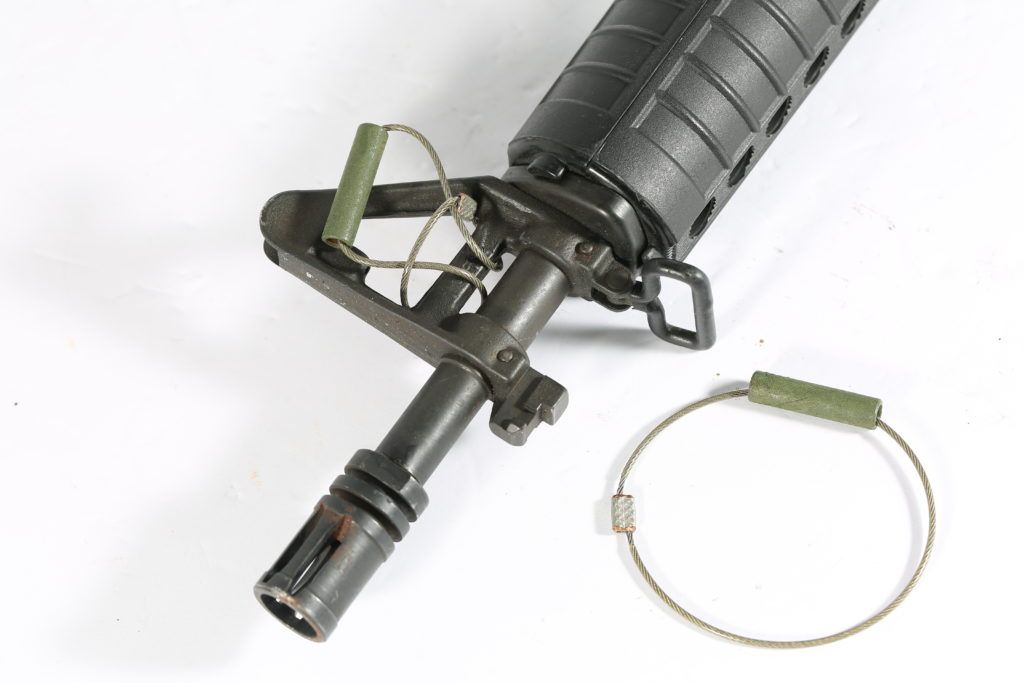At GunDigest, we independently review products. However, we may earn a commission when you purchase through links on our site. Learn More
How To: Attach A Sling To Your AR
Over the years Patrick Sweeney has learned a few unique ways to attach a sling to an AR. Here are some tips and tricks to make any sling work on your AR-15.

I’m a Neanderthal when it comes to slings. Sure, I learned the classic leather target sling. You know, where the thing is so tight you can see your heartbeat in the scope and your fingertips turn blue as you aim. But I never had any use for it, since the competitions I shot in never called for it. Those contests even made the device difficult to use. So, for me a sling is simply a means of carrying a rifle, and to keep it off the ground while you use both hands for something else.
To that end, I have settled on a pretty simple sling system. The stock end is the easiest to describe, since it doesn’t involve any hardware.
Rear Sling Attachment
Take a length of 550 cord, 2 feet is a start for fixed stocks, 18 inches for telestock. Loop it over four fingers and tie a knot. Hold the loop at the top of the stock, while you run the tail ends over the other side and back up to the top.
On the fixed stock, loop the ends so they are behind the bottom sling swivel. This way it can’t slide forward. Tie the ends in a knot behind the loop on top. Melt or glue the cord ends so they can’t come loose. The knot behind the loop keeps it from sliding off the back of the stock when you use it. Pull the knots as tight as humanly possible.
On the telestock, loop the ends down and through whatever slots, gaps or opening the maker of the stock provided, and back up to tie off just as you would with the fixed stock.
This is your rear sling swivel. With this approach, the sling comes off the top of the rifle , not the side or bottom. It is light, inexpensive and quiet. I can install it on any rifle in a matter of minutes, and take it off even faster. I can put it on a rifle for a class and take it off when I’m done, without any permanent modifications to the rifle.
Three Approaches To Front Sling Attachment
On the front, I take one of three approaches.
1st Approach
The first is a loop of braided stainless steel wire/cable, secured in a circle with a cable pinch. I loop the wire though the front sight housing, and then back through itself so the loop is locked to the rifle, extended for the sling. A refinement of this is to add a length of cable cover, to reduce the wear on the sling.
The advantage of this approach is that you can put a side-mounted sling on a bone-stock rifle or carbine, and then remove it when you’re done. If you arrive at a class where they’ll be using issued rifles, and you don’t want to screw around with a classic sling, this is the answer. You can have this loop in your gear, install it in a minute, and get to the class with something resembling modern equipment.
2nd Approach
The second is to tie a short section of 550 cord to the railed handguard and use that as the front sling loop. The advantage of this is that it is cheap and you can install it on a rifle you’ll be using for only a short while.
3rd Approach
The third method is to use a clamp-on sling swivel on a railed handguard. This can be a quick-detach (QD) style. It’s easy to attach (requires a railed handguard) and you can place it right where you want a hand stop.
The Sling Strap
The sling itself is a simple nylon strap to get the rifle hanging where you need it. The strap allows you to sling the rifle behind, but not so loose that it dangles down around your waist or knees. Too much sling can be a problem. Not only can it let the rifle hang too low or swing around too much, but it can get tangled up in the darndest things.
Single-Point Slings
I am not a fan of single-point slings, and avoid them if I can.
Now, if you do not want to experiment with 550 cord, then modern free-float handguards quite often incorporate QD sling sockets in the design. Modern stocks do this as well. It is easy enough to simply pick up a set of QD swivels, attach your sling, and plug them into the sockets. My recommendation for slings is this: the simpler the better.
Editor’s Note: This article is an excerpt from Gunsmithing the AR-15: The Bench Manual by Patrick Sweeney.
Next Step: Get your FREE Printable Target Pack
Enhance your shooting precision with our 62 MOA Targets, perfect for rifles and handguns. Crafted in collaboration with Storm Tactical for accuracy and versatility.
Subscribe to the Gun Digest email newsletter and get your downloadable target pack sent straight to your inbox. Stay updated with the latest firearms info in the industry.